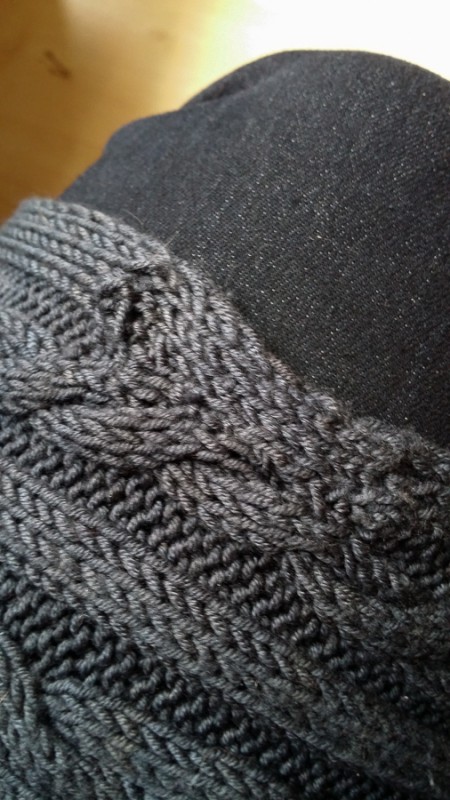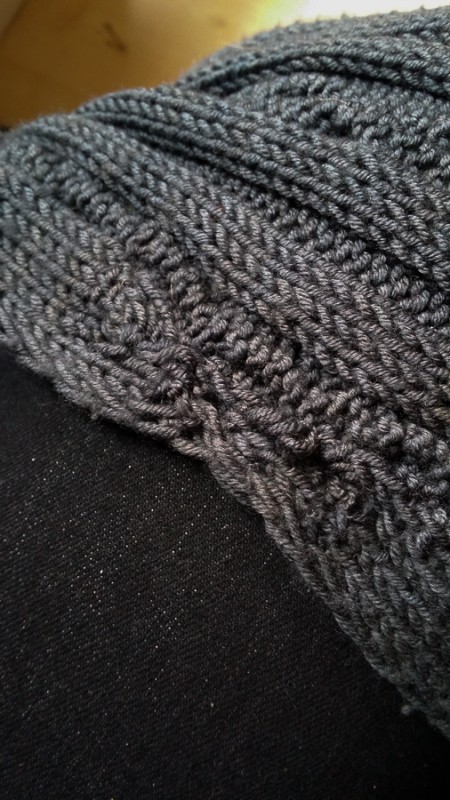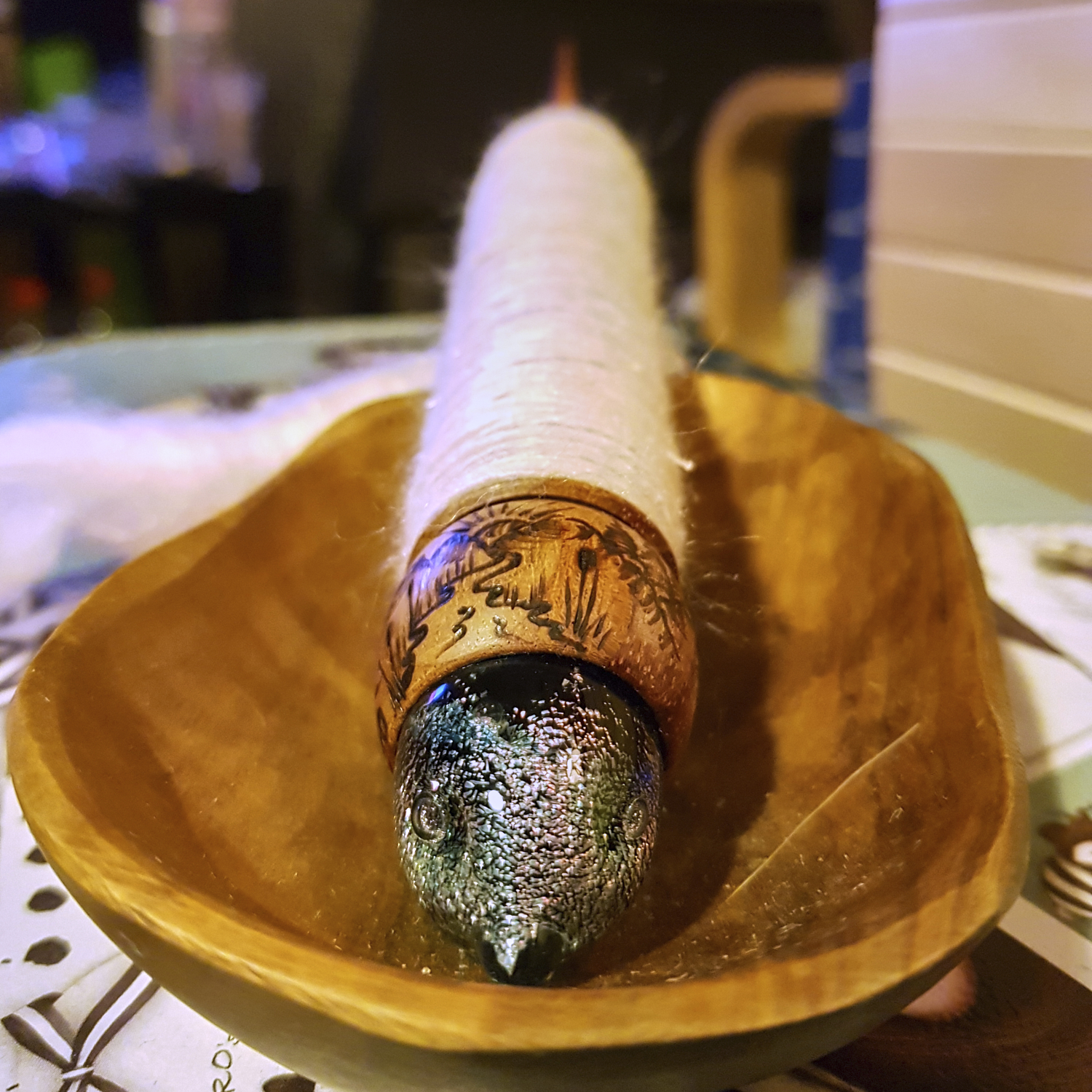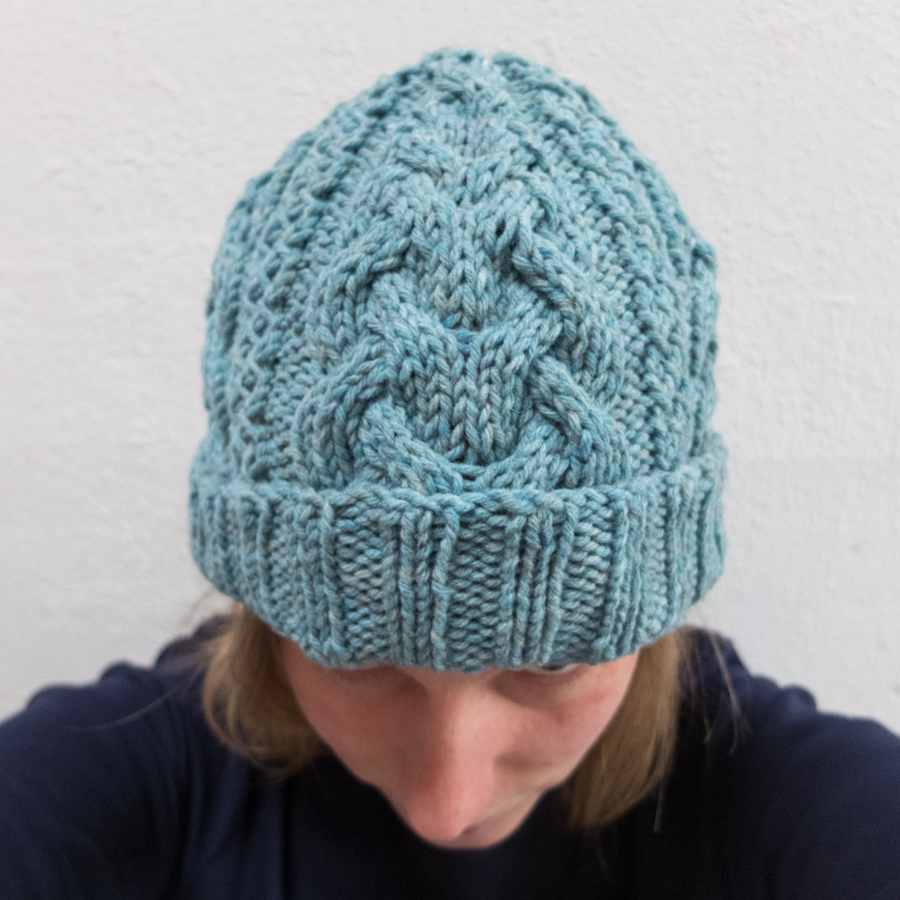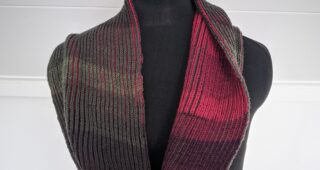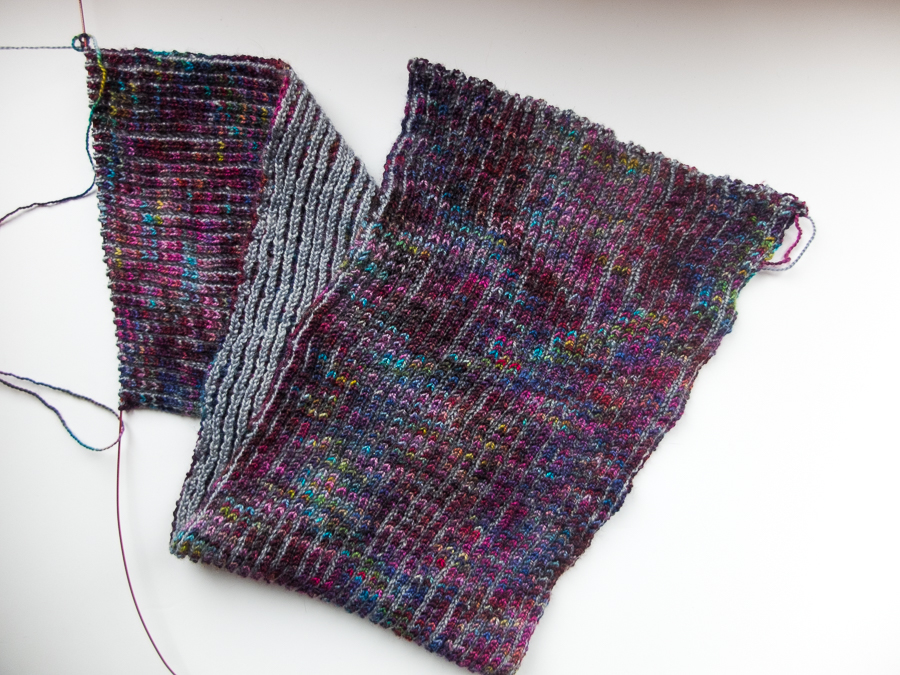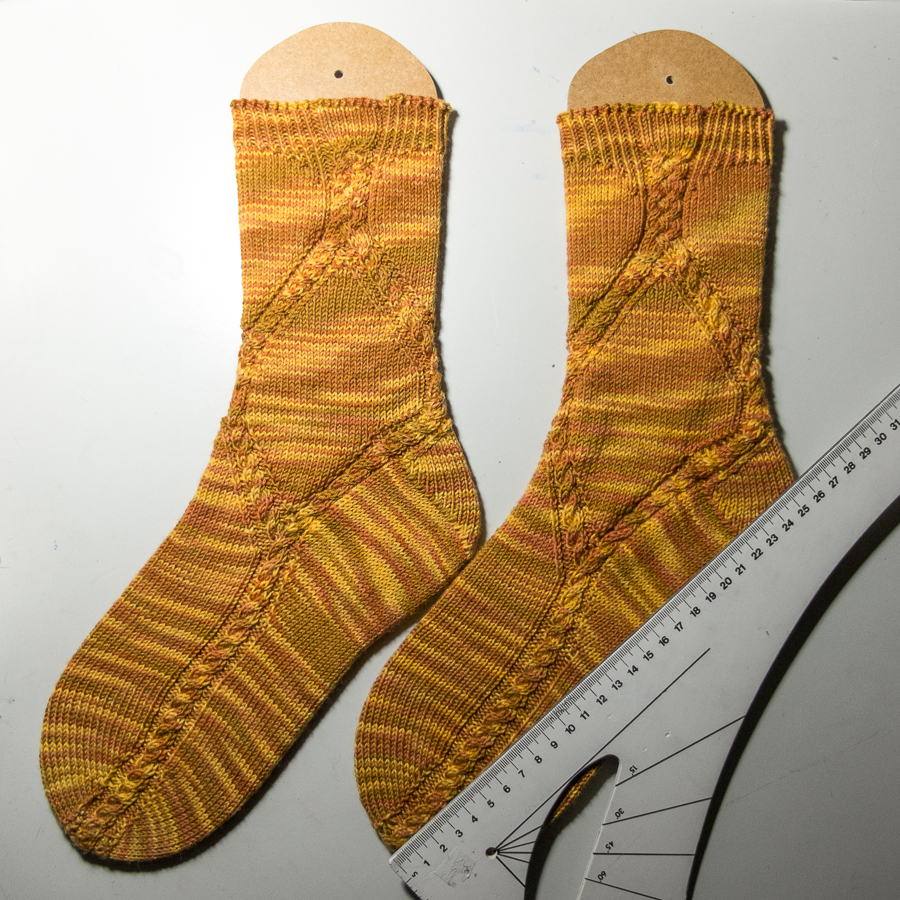Amazingly, I have never learned darning yet. On the first Dutch Knitting Days there was a workshop about it, but it was at the same time as another workshop I wanted to follow, and I preferred that one in the end. But now I have come to a point where I had to learn:
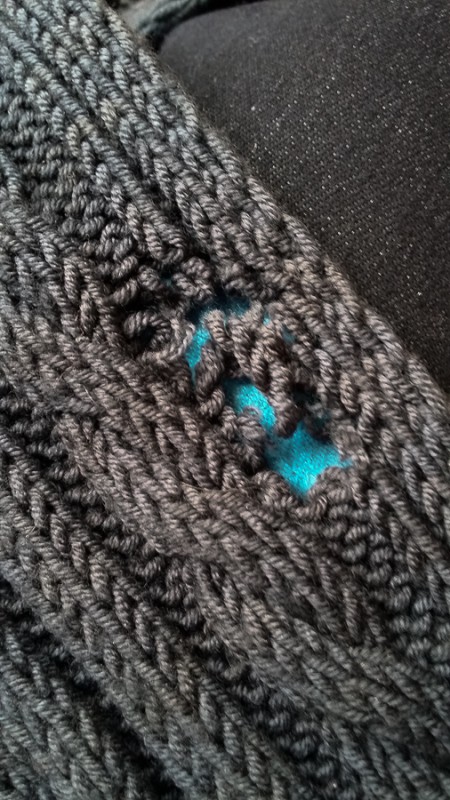
This is the scarf I knitted for my husband some time ago. It’s made of Wollmeise DK. A very soft and lush yarn, but apparently it’s also quite delicate. So I went on the internet to search for darning methods.
The first one I found was the traditional darning method: weaving. You cover the hole and the area around it with horizontal lengths of yarn, and then you weave it vertically. But I wanted something more like knitting. That’s when I found Swiss darning.
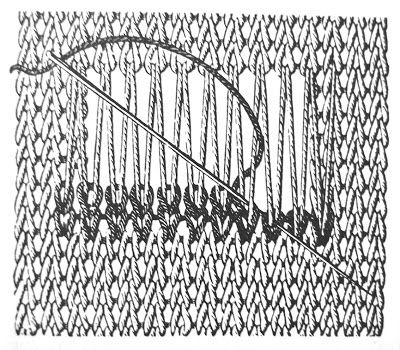
This looks promising! So I tried to execute this method. The stitching itself was not that hard, but keeping the right tension was. The long vertical bits should not be too tight, but the stitches themselves should match the stitches of the project. After a couple of rows, it became way too loose. Would a darning egg help here, even though the scarf is straight?
By then I was tired and sick of it, so I decided to just think of something myself. I wove in horizontal strands, picked up my crochet hook, and started creating stitches, just like when you try to pick up a dropped stitch. It worked, but there was one disadvantage: the horizontal strands should have been longer (maybe as long as twice the horizontal area), and the scarf was pulling inward now. But at least the hole was not there anymore and I decided it was enough for today – the scarf was functional again. My husband could take it with him tonight on his way to Oslo for a weekend with his siblings.
The wrong side became a bit messy, that shouldn’t be necessary – I was in a hurry and just wanted to be done with it. I may experiment with this darning method and make a tutorial (if it does not exist yet).
